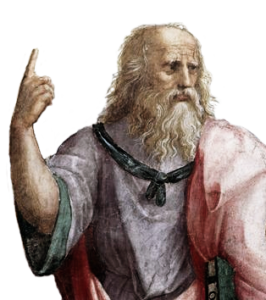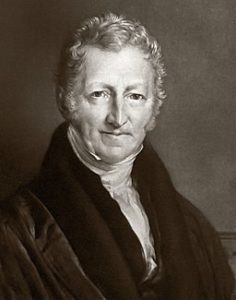
For over half a century, Earth Day has brought about strident warnings about the dire consequences of overpopulation and overconsumption that ranged from the fear of running out of valuable resources to the inability of nature to absorb our polluting emissions. In more recent times though, a few defenders of economic growth have used this opportunity to point out the abysmal predictive record of environmental activists in the last two generations and the undeniable progress, be it in terms of improved human health and greater resource abundance to cleaner air and water and a greener planet, that has been accomplished since then.
Humanity’s achievements are even more remarkable in light of how many more of us there are today and how much wealthier we are than our ancestors. Suffice it to say that 70,000 years ago Homo sapiens’ numbers were in the thousands. This figure grew to about 4 million individuals at the dawn of agriculture 10,000 years ago. Mainstream estimates now suggest there might have been as few as 73 million people 4,000 years ago, 230 million individuals 2,000 years ago and 500 million individuals 500 years ago. Humanity first broke the billion mark two centuries ago. There are now nearly eight billion of us, the majority of whom live in urban areas. Needless to say, in the last two centuries real income in many industrializing countries increased by a factor of 10, 30, or 100 while poor people in developed economies now live better than 18th-century European monarchs.
One thing that didn’t change much over this time period, however, is the conflict between prophets of environmental doom, including human-induced catastrophic climate change, and their opponents. As resource economists Harold J. Barnett and Chandler Morse wrote six decades ago, “Man’s relationship to the natural environment, and nature’s influence upon the course and quality of human life, are among the oldest topics of speculation of which we are aware. Myth, folktale, and fable; custom, institution, and law; philosophy, science and technology – all, as far back as records extend, attest to an abiding interest in these concerns.” What follows is a short sampling of ancient “green” ideas that are still very much us today.

Population growth, deforestation and soil erosion form the main backdrops of the oldest known written story, The Epic of Gilgamesh. In another ancient Mesopotamian epic, the Atrahasis, the gods deem the Earth too crowded and unleash plagues, famine, droughts and a gigantic flood to address the problem. Confucius (551-479 B.C.E.) and some of his followers argued that excessive population growth may reduce output per worker, lower standards of living and create strife. Plato (427-347 B.C.E) warned that “exceed[ing] the limit of necessity” and the “unlimited accumulation of wealth” would trigger expansionary wars, especially in light of the populace’s fondness for meat that would create struggles over pastureland. His solution was a vegetarian diet. He also lamented that Athens’ backcountry, whose hills had once been “covered with soil,” the plains “full of rich earth,” and the mountains displaying an “abundance of wood,” had been turned, after years of abuse, into a landscape that could “only afford sustenance to bees,” because all the “richer and softer parts of the soil [had] fallen away” and only the “mere skeleton of the land” was then left.
Writing at the turn of the third century, the theologian Tertullian (c. 155-c. 220 AD) observed that what “most frequently meets our view” and “occasions complaint” was “our teeming population.” Human numbers had become “burdensome to the world, which can hardly supply us from its natural elements.” Worse, “our wants grow more and more keen, and our complaints more bitter in all mouths, while Nature fails in affording us her usual sustenance.” In this light, “pestilence, and famine, and wars, and earthquakes have to be regarded as a remedy for nations, as the means of pruning the luxuriance of the human race.” Another important figure in the early Church, Saint Jerome (c. 342/347-420 AD), later commented that “the world is …full, and the population is too large for the soil,” a problem he believed best addressed through the creation of monasteries.
In the early sixteenth century, Niccolo Machiavelli (1469-1527) observed that “when every province of the world so teems with inhabitants that they can neither subsist where they are nor remove elsewhere, every region being equally crowded and over-peopled,” and when “human craft and wickedness have reached their highest pitch,” the world would purge itself through either floods, plagues, and famines so that men, “becoming few and contrite, may amend their lives and live with more convenience.”

While many people blamed problems on overpopulation, the first catastrophist theorist on the subject is generally acknowledged to be the Italian Giovanni Botero (1540-1617). Nearly two centuries before the better known Thomas Robert Malthus (1766-1834), Botero argued that human population would increase to the maximum extent permitted by human fertility, that the means of subsistence could only increase slowly and wouldn’t keep up, and that the unavoidable result would be poverty, starvation, war, diseases, and population crashes.
Another writer who anticipated Malthus was the Danish cleric Otto Diederich Lütken (1713- 1790). As he put it in 1758, some of humanity’s most significant problems were the incontrovertible facts that the “circumference of the globe is given and does not expand with the increased number of its inhabitants,” no one had invented “travel to other planets thought to be inhabitable and the “earth’s fertility” could not “be extended beyond a given point.” As such, the proposition that “the world’s inhabitants will be happier, the greater their number’ was indefensible, because as soon as the number of humans exceeded “that which our planet with all its wealth of land and water can support,” they would eventually “starve one another out.”
Lütken challenged the notion that a greater number of individuals might be desirable because it was the dominant opinion at the time. As many Renaissance and Enlightenment thinkers saw things, more people not only meant more manpower for armies, but also more hands to work and more brains to think of new solutions. The British political economist Sir William Petty (1623-1687) thus suggested it was more likely that “one ingenious curious man may rather be found out amongst 4,000,000 than 400 persons.” The German alchemist Johann Joachim Becher (1635-1682) observed that through the “increase of population come increased facilities for subsistence, and through the latter comes influx of people; this in its turn causes further increase of population, and so on in an everlasting circle.” In 1771, the French economist and cleric Nicolas Baudeau (1730-1792) summarized the thoughts of many by suggesting that the “productiveness of nature and the industriousness of man are without known limits” because production “can increase indefinitely” and, as a result, “population numbers and well-being can go on advancing together” (my translation).
Despite optimistic thinkers being repeatedly vindicated in the following decades, however, many segments of the Western elites would become ever more pessimistic as to humanity’s prospect. This topic will be discussed in another post.
Pierre Desrochers is Associate Professor of Geography, University of Toronto Mississauga.

READER COMMENTS
Phil H
Apr 21 2022 at 12:17am
Right… but we have in fact caused environmental disaster. Britain used to be the “dark isle” because it was covered with trees. By Tudor times, we were colonising places because there were no more trees in Britain big enough to make ship keels. Dodos and many other animals no longer exist because of human intervention.
I’m pretty bullish about the power of human ingenuity, too. But to pretend that history is just a stream of environment Cassandras is disingenuous. Many writers made mistakes in the past; you’re making one here.
Thomas Lee Hutcheson
Apr 21 2022 at 1:59pm
I’m pretty optimistic about ingenuity, too, if it is profitable. For example geothermal may be even better for base loads and running carbon capture than nuclear, but without a tax on net CO2 emissions the incentive to develop this promising technology (or perhaps other presently unknown technologies) will not be there.
Max More
Apr 21 2022 at 4:38pm
English experienced deforestation early in the industrial revolution but that reversed once we stopped using wood for energy. Green areas in the UK and in the USA have increased greatly over the last century. Areas that are privately owned, naturally, tend to be managed better, but national parks in the USA have also protected a growing area.
Nicolas
Apr 23 2022 at 6:44pm
Why do apocalyptics refer to earlier problems without noting that those problems have been mitigated? Apparently because they relish pessimism.
Mactoul
Apr 22 2022 at 1:07am
Well growth of population necessitates some environmental changes such as conversion of forests to farmland.
But why this change be necessarily called a disaster?
Pierre Desrochers
Apr 21 2022 at 12:24pm
Well, I’m something of a Promethean https://www.econlib.org/library/columns/y2022/desrochersprometheus.html
The way I see things, humans have generally benefitted from modifying landscapes and the more technologically sophisticated we become, the easier it is to address the mistakes of the past and avoid making new ones in the present. At least in free-market economies…
And sure, humans wiped out a number of species big and small, but Nature caused many more environmental disasters and species extinctions than we ever did.
I’ll have more to say on these and related topics in the forthcoming columns.
steve
Apr 22 2022 at 11:18am
Diamond documented some places where the environment was degraded enough to cause problems like Easter Island and other places like the South Seas where adding hogs unbalanced the local ecosystem. Air quality is much better since we got rid of fluorocarbons and all the changes we required to improve air quality. People forget that the air was bad enough to shut down LA in the past (still really awful in China and parts of India). To that we should probably add water pollution which is markedly better. We dont have lakes on fire anymore. Heck, read what London was like before they added the public sewers.
We are capable of creating environmental destruction but we are also pretty good at stopping it and even fixing it. While I think every system has a carrying limit I have no idea what it is for the planet since we have always found a way to increase it. I dont think we can do that forever but who knows how close we are.
Steve
Thomas Lee Hutcheson
Apr 23 2022 at 7:17am
Yes, planetary doom scenarios fail to consider how easy (low deadweight cost) it would be to stop and reverse CO@ accumulation in the atmosphere with a tax on net CO2 emissions.
Pierre Desrochers
Apr 23 2022 at 8:53pm
And how easy will it be to sell this tax to people who struggle to make ends meet or else don’t even have access to reliable electricity? I don’t see energy poverty as a desirable end and right now nothing is cheaper/more reliable/scalable than carbon fuels. Wouldn’t you agree that getting rid of perverse subsidies https://www.cbd.int/financial/fiscalenviron/g-subsidyperverse-iucn.pdf would be a more sensible first step?
Michael Rulle
Apr 25 2022 at 10:51am
Eventually the world will end. The current guess is the Sun has about 5 billion years left—-although I have never read a guess on how temperature will decline. We also know only a little bit about the core of our planet, although we are pretty sure it’s mostly iron (liquified of course), about 1/10th the diameter of the planet and temperature equal to the sun’s surface (about 9000-10,000 degrees Fahrenheit). Somehow this enabled humans to “evolve” from amoeba.
The most fascinating aspect of humans, besides it’s desire to fight wars, is its ability to expand technologically. No other creature does either. In the grand scheme of things, —as Mr Desrochers makes clear, it really does seem ridiculous that some think we can predict when doom will occur. In short spans of time (measured in decades and even hundreds of years) we also are very adaptive.
Hypothetically, predictions of doom can be helpful as it might cause adaptability. Except, virtually all predictions of doom have proven to be absurd and not the least bit helpful.
The most likely way we will destroy ourselves, unfortunately, is that other fascinating aspect of humans——-our will to war. Now that we have the ability to turn millions into dust with just one bomb, that is something to focus on.
Also, the same randomness that created us (or the appearance of randomness) can kill us too——that comet/asteroid coming our way but have not yet seen.
But even that we might prevent. But “too many people” or “anthropogenic climate change” as humanity killers? I don’t think so.
Comments are closed.